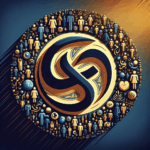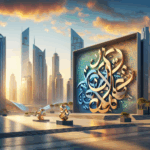The Journey of the Arabic Alphabet: From Calligraphy to Digital Fonts
The Arabic alphabet is not just a means of communication; it’s an art form that has evolved over centuries. From the intricate strokes of calligraphy to the sleek lines of digital fonts, let’s explore the fascinating journey of this beautiful script. 🌟
Table of Contents
1. The Origin of the Arabic Alphabet
2. Arabic Calligraphy: The Art of Writing
3. The Transition to Digital Fonts
4. The Future of the Arabic Script
5. Conclusion
6. FAQs
The Origin of the Arabic Alphabet
The Arabic alphabet has a rich history that dates back to the 4th century CE. It evolved from the Nabataean script, which itself was derived from the Aramaic alphabet. The alphabet has 28 letters and is written from right to left, a distinctive feature that sets it apart from many other scripts.
Historically, the Arabic script played a crucial role in the spread of Islam, as it was the primary language of the Quran. This not only elevated its status but also led to its adoption in various regions across the Middle East and North Africa.
Arabic Calligraphy: The Art of Writing ✒️
Arabic calligraphy is more than just writing; it’s an artistic expression. The fluidity and elegance of Arabic letters have inspired countless artists and calligraphers over the centuries. Styles such as Kufic, Naskh, and Thuluth are renowned for their beauty and complexity.
Each style of calligraphy has its own unique characteristics. For example, Kufic is known for its angular form and was commonly used in early Quranic manuscripts. On the other hand, Naskh is more rounded and is often used in everyday writing.
The Transition to Digital Fonts 🖥️
As technology advanced, the need for digital Arabic fonts became apparent. The transition from handwritten to digital was not just a technical challenge but also an artistic one. Designers had to ensure that the elegance and readability of the script were maintained in the digital realm.
Today, there are numerous digital Arabic fonts available, catering to different needs and preferences. From traditional styles that mimic calligraphy to modern, minimalist designs, digital fonts have made the Arabic script more accessible and versatile than ever before.
The Future of the Arabic Script 🚀
With the continuous evolution of technology, the future of the Arabic script looks promising. Innovations such as artificial intelligence and virtual reality have the potential to further enhance the way we interact with this beautiful script.
Moreover, there is a growing interest in preserving traditional calligraphy while embracing modern design trends. This balance between tradition and innovation ensures that the Arabic script remains relevant and cherished by future generations.
Conclusion
The journey of the Arabic alphabet is a testament to its enduring beauty and adaptability. From ancient calligraphy to cutting-edge digital fonts, it continues to captivate and inspire. As we look to the future, the Arabic script stands as a symbol of cultural heritage and creative expression.
FAQs
Q: What is the most popular style of Arabic calligraphy?
A: Naskh and Thuluth are among the most popular styles due to their readability and aesthetic appeal.
Q: Are there any challenges in creating digital Arabic fonts?
A: Yes, maintaining the script’s elegance and readability while adapting it for digital use can be challenging for designers.
Q: How has technology impacted Arabic calligraphy?
A: Technology has made it easier to create and distribute Arabic calligraphy, allowing for more experimentation and innovation in the art form.
Q: Can I learn Arabic calligraphy online?
A: Absolutely! There are numerous online courses and resources available for those interested in learning Arabic calligraphy.
Q: What are some modern uses of the Arabic alphabet in design?
A: The Arabic alphabet is used in various design fields, including branding, advertising, and digital media, often incorporating both traditional and modern elements.





